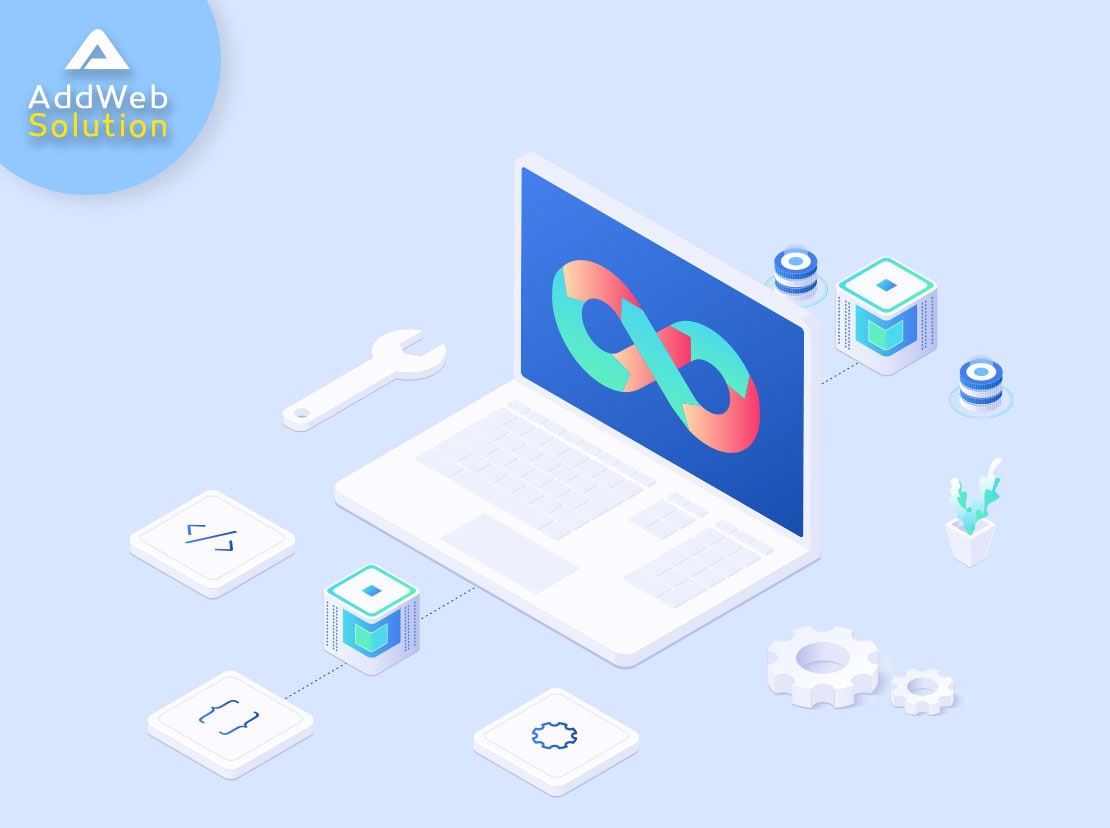Enterprises can achieve certain levels of success by identifying the need in the market, hiring skilled resources, and utilizing advanced tools and technologies. Every one of us is doing the same to keep moving in this competitive world.
But do you feel it helps you set apart and chart a long-term success for your business? The answer is a big NO! To achieve long-term success, you must address the values, beliefs, and behaviours to enable a “carefully crafted” work culture. It is something that helps an enterprise to transform its idea into a value. And when we talk about introducing such new practices and processes, DevOps plays a vital role. You must be wondering what DevOps is and how it is relevant. Let’s figure it out.
WHAT is DevOps???
First thing, DevOps is not just a bunch of tools. Still, it is more about a cultural shift involving changes in how people are organized, and the processes facilitated by them are not governed simply by technology or tools. In another way, DevOps is a mix of cultural, development, and operational changes to better any enterprise or business. DevOps focuses on three different aspects like collaboration, communication, and seamless integration between technical and operations teams.
But why DevOps? Well, before we get into the nitty-gritty of how you can prepare your business for the DevOps transition, let’s take a look at the factors behind the rise of DevOps.
Management bottlenecks and IT Silos:
The approach is time-consuming and not helping enterprises get a satisfactory outcome for their investment.
Error-prone testing approach:
With fixed silos of the department, testing is not done in each stage of development, which results in post-release bugs and poor quality of end product delivered.
Lack of transparency:
Isolated work stages cause a gap between expectations vs delivered products. The lack of transparency and collaboration makes the team rework and fails to address complaints from the end-users.
Delay in providing fixes:
Due to a lack of transparency between the technical and testing team, fixing bugs, making new changes, or implementing them takes longer than expected. This, in the end, results in a delay in time to market for the client or stakeholders.
Related Article: The Fusion of DevOps and Agile
Benefits of DevOps
We’ve seen what the different problems faced with traditional SDLC are. Let’s take a look at how DevOps benefits enterprises.
- Enable faster deployment with frequent delivery of updates and bug fixes.
- Get rid of stress to release new features or fixes with a stable work environment.
- Helps you improve the overall product quality with effective collaboration between tech and testing teams.
- Since back-end systems are updated in smaller chunks and testing and development cycles are streamlined, your website remains up and running. In the end, it reduces downtime.
- Ease of automating repetitive tasks, which encourages innovation and fixes the bugs quickly.
- Brings agility to your business.
- Continuous delivery of a product since all the departments are equally responsible for delivering a quality solution.
- Helps you reduce the overall cost of production since maintenance and new updates are all covered systematically.
How to transition to DevOps?
Shifting your organisation’s culture is not possible overnight, but you can surely define actions and informed decisions to initiate it for sure. Adopting a DevOps culture is challenging, and no enterprise can implement it successfully without following the right steps. Let’s take a look at how you can prepare for the transition to DevOps without any hassle.

Make sure everyone within your team is aligned. Since it is all about a cultural shift, everyone must be on the same page. You can start educating them about what DevOps is and why DevOps is important for your organization. Unless everyone is sure and confident about how it will benefit your organization, you cannot move ahead.
Figure out a budget. Another important factor you must consider to prepare for the DevOps transition is creating a rough estimate of the expenses you will have to deal with while transitioning to DevOps. Not having a proper budget plan will waste money and reduce productivity.
Foster communication and collaboration. Communication and collaboration are two main aspects of DevOps. It would be best if you kept in mind that DevOps is not limited to development and operations. It is more about bringing all stakeholders together to work on common goals and objectives. You should start adopting agile practices and let everyone in the team know about their role. They should have an overview of where the project is moving and steps to help them be there.
Employ discipline and accountability. It is a must that you enforce discipline and accountability where everyone is responsible for their work. You can follow things like spike programming, unit tests, commented code, etc. Since developers and DevOps engineers work through the entire application lifecycle, they must develop diverse skills that are not limited to any specific role.
Train your team. DevOps is all about developing a new skill set, and thus, you must start investing in training your team as a long-term investment since it will help you change your development approach. It will help you achieve faster completion of the project in the future.
Start using the right set of tools. Of course, DevOps is all about mindset and cultural shift, but tools are also integral. Your transition works effectively when your team is well-aware of various tools like Git, Docker, Hadoop, Kubernetes, etc. However, it is important to keep in mind that whatever tools you use are compatible to enhance the work environment.
Don’t overlook version control systems. It would help if you always considered the scenario where you have to roll back certain changes or access archived code in the event where you need to re-use previously written code snipped. Using version control systems and shared repositories could ease your work.
Once you’re ready with all the necessary preparations, you can start the transition journey to DevOps.
How can AddWeb Solution help?
When you implement DevOps, you can achieve significant improvements in speed of delivery, cost, and security. However, this is true when you have implemented it correctly. We know how difficult it is to shift to DevOps and our DevOps experts know who to make it smoother for you. Get in touch with us to hire DevOps engineers now…
Frequently Asked Questions
DevOps is a collaborative approach that emphasizes communication and collaboration between software development and IT operations teams. It aims to streamline software delivery, fostering efficiency and faster release cycles.
DevOps is crucial for achieving continuous delivery, reducing time-to-market, and enhancing collaboration. It helps organizations respond more quickly to market demands and deliver high-quality software with improved reliability.
DevOps principles include collaboration, automation, integration, delivery, and monitoring. Following these principles guides organizations in building a culture of shared responsibility and automation.
The transition to DevOps involves fostering a cultural shift, introducing automation, and implementing continuous integration and continuous delivery (CI/CD) pipelines. It’s essential to start small, gain team buy-in, and gradually expand DevOps practices.
Automation is a crucial DevOps principle. It automates repetitive tasks such as testing, deployment, and infrastructure provisioning. Automating these processes accelerates delivery and reduces the risk of errors.
DevOps encourages collaboration and communication by breaking down silos between development and operations teams. Cross-functional collaboration ensures everyone is on the same page, leading to faster and more efficient development and operations.
DevOps practices can be integrated with existing tools and technologies. DevOps is more about culture and practices than specific tools. It’s crucial to choose tools that suit the organization’s needs and facilitate automation and collaboration.
Continuous integration involves automatically integrating code changes and running tests to detect issues early in development. This practice ensures that code is consistently integrated and tested, reducing the likelihood of integration issues.
